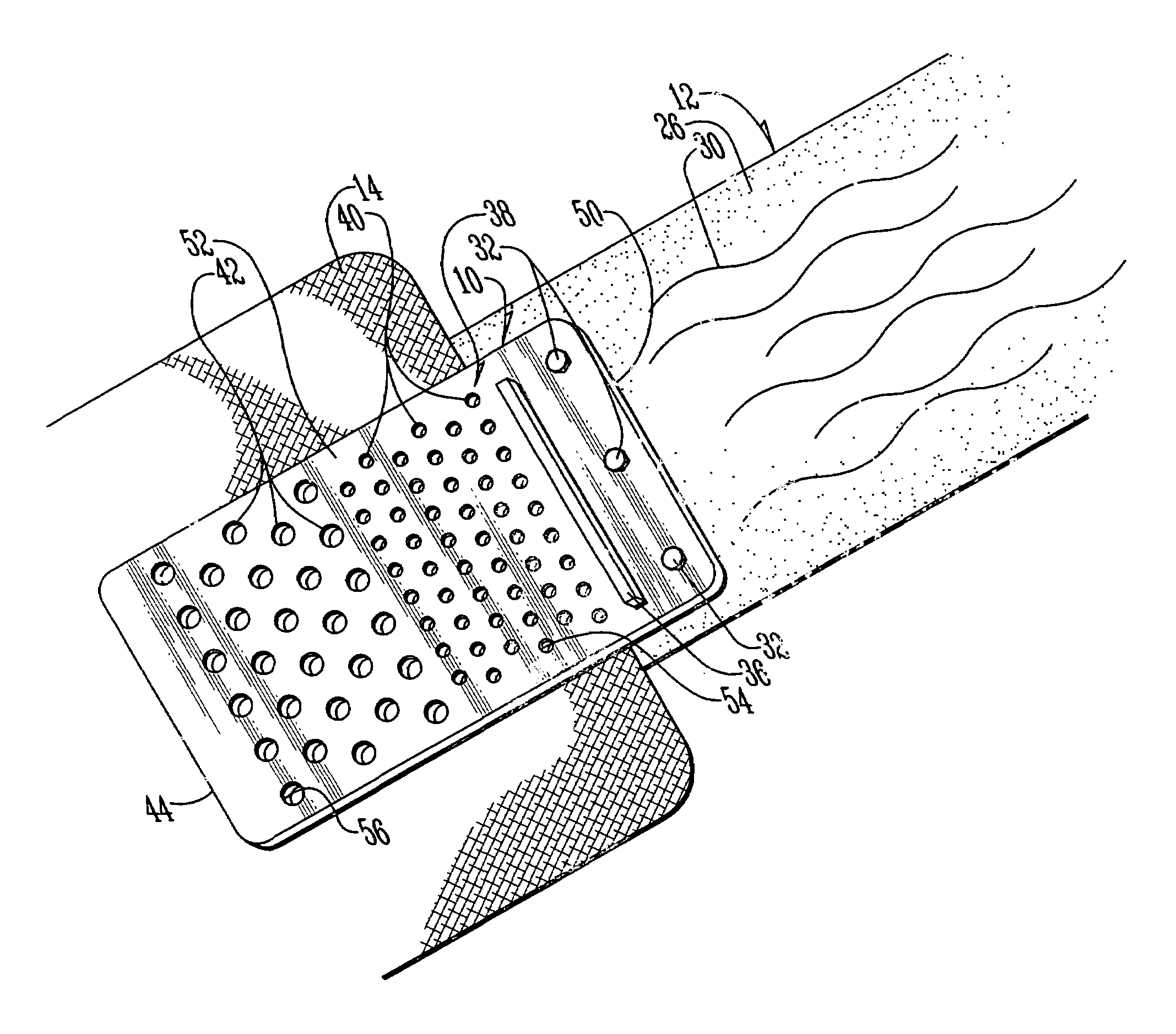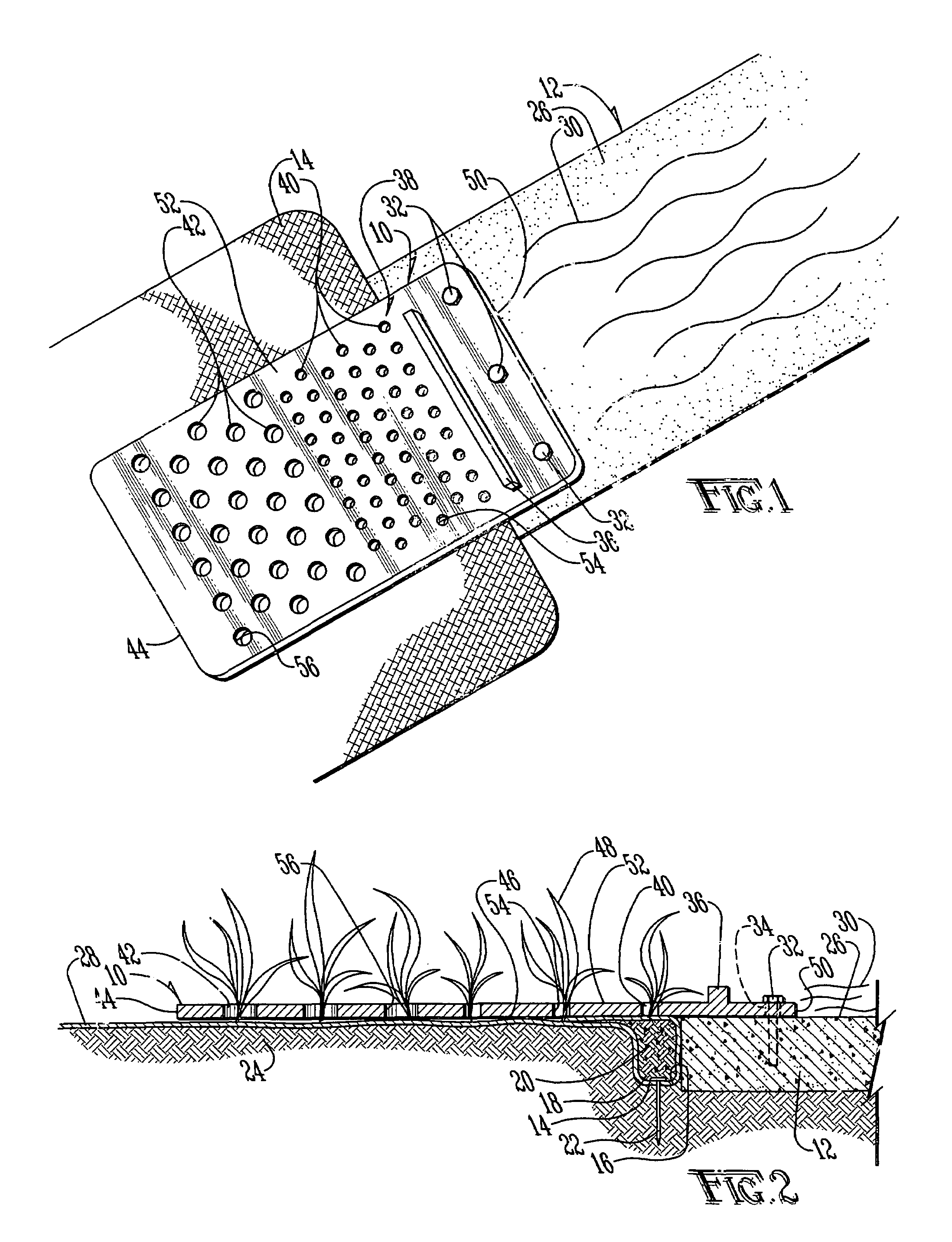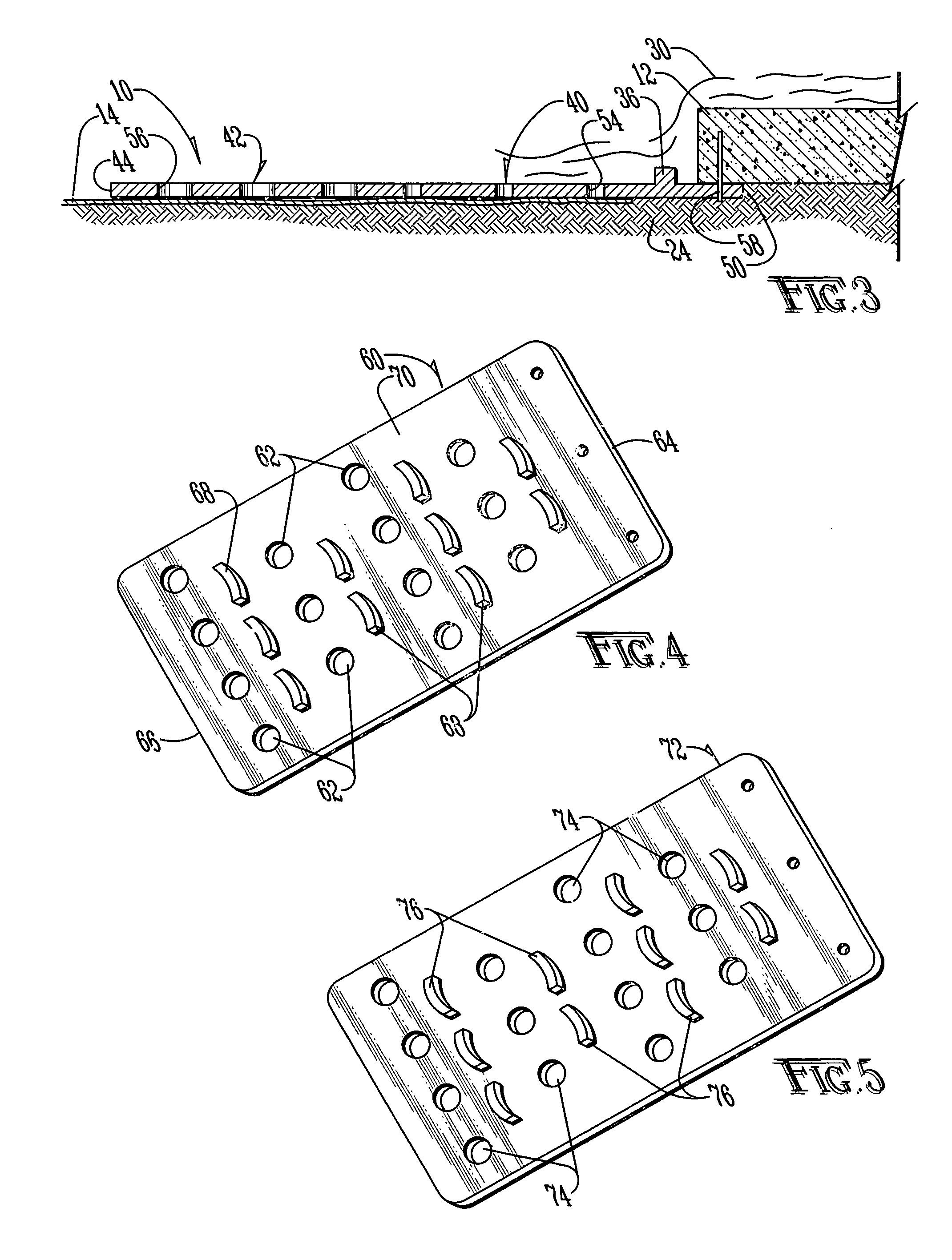Erosion control transition mat
a transition mat and erosion control technology, applied in the field of mats, can solve the problems of high erosive occurrence of storm water pipe outlet and the like used to divert water runoff at their outlets, high economic, physical and logistical problems, and high occurrence of severe erosion of soil area adjacent to such discharge points, so as to reduce the velocity, increase the aesthetics and utility, and dissipate runoff
- Summary
- Abstract
- Description
- Claims
- Application Information
AI Technical Summary
Benefits of technology
Problems solved by technology
Method used
Image
Examples
Embodiment Construction
[0029]An erosion control transition mat (10) according to this invention is shown in overlapping relationship with a section of hard armor (12) and soft armor (14). While the hard armor (12) may be rocks of varying sizes, typically referred to as “rip rap,” concrete blankets (flat sock material filled with concrete or concrete blocks held together with steel cables), or any other similar material, in the preferred embodiment, the hard armor (12) is a concrete slab approximately two to 25 centimeters thick. It should be noted, however, that the present invention may be utilized with any type of hard armor (12) known in the art.
[0030]The soft armor (14) may be porous plastic sheeting, canvas, dense vegetation, or any other similar soft armor known in the art. In the preferred embodiment the soft armor is a turf reinforcement mat, such as those known in the art. Such turf reinforcement mats are typically blankets having a three dimensional structure, such blankets being flexible, often...
PUM
 Login to View More
Login to View More Abstract
Description
Claims
Application Information
 Login to View More
Login to View More - R&D
- Intellectual Property
- Life Sciences
- Materials
- Tech Scout
- Unparalleled Data Quality
- Higher Quality Content
- 60% Fewer Hallucinations
Browse by: Latest US Patents, China's latest patents, Technical Efficacy Thesaurus, Application Domain, Technology Topic, Popular Technical Reports.
© 2025 PatSnap. All rights reserved.Legal|Privacy policy|Modern Slavery Act Transparency Statement|Sitemap|About US| Contact US: help@patsnap.com



